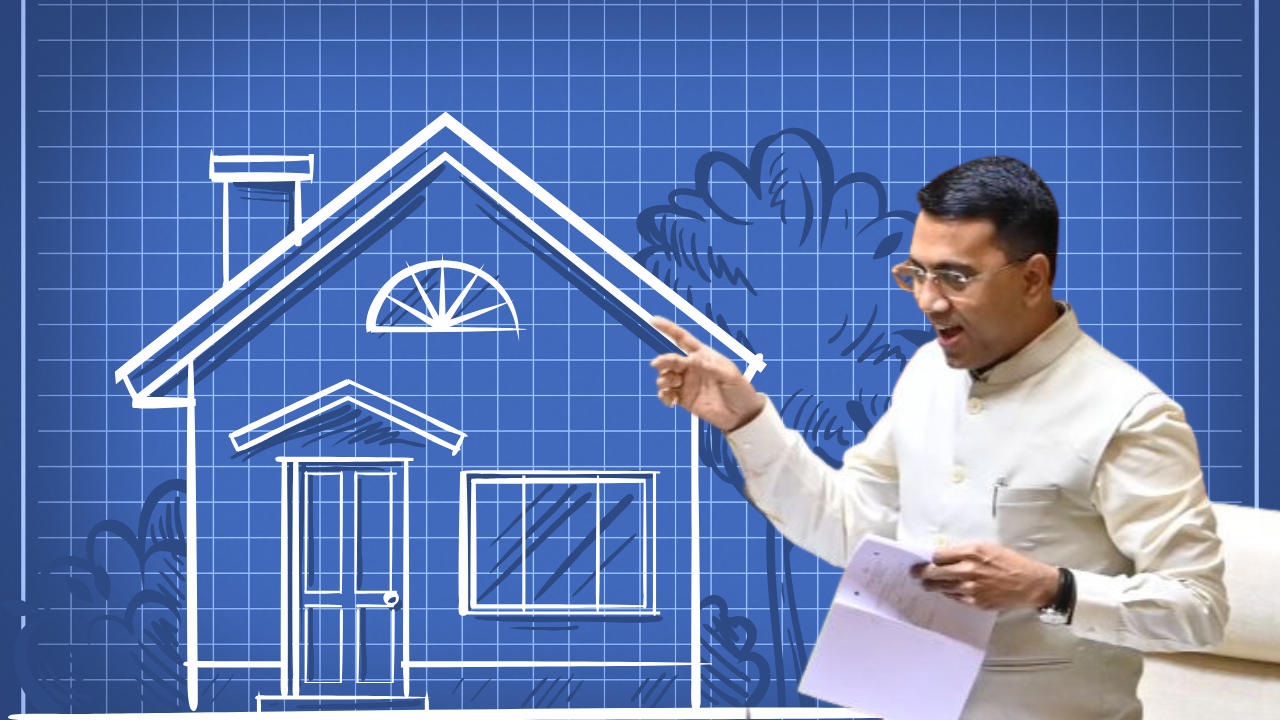
PANAJI: In a significant move that could benefit more than one lakh Goan households, Chief Minister Pramod Sawant announced that the government will roll out a three-step process to regularise old houses that appear on official survey plans drawn before 1972, even if they are located on Alvara or Bhatkar land.
The process, which begins on August 1, will involve the issuance of three official certificates, and Sawant assured the public that once the required documents are verified, certificates will be issued within seven days.
“We are issuing three circulars to clear the confusion about which houses in Goa are legal or illegal,” said Sawant during a press briefing today. “This will benefit those whose homes are reflected in the original survey plans of the early 1970s. Even if the structure is on Bhatkar land or Alvara land, it will be considered for regularisation.”
He explained that the first step will be the issuance of a Settlement Land Certificate by the Deputy Collector. To be eligible, the house must be shown on the old survey plans prepared under the Goa Land Revenue Code of 1968, typically between 1970 and 1972. The structure must occupy at least 25% of the plot, and the total area of the holding must not exceed 1,000 square metres. Upon submitting an application with a fee of Rs 1,000, the Deputy Collector will verify the supporting documents, such as Form I and XIV, and Form D, and consult the Directorate of Settlement and Land Records if necessary. If you are found eligible, the certificate will be issued within one week.
“This certificate acts as a conversion sanad itself. No further conversion sanad will be needed for reconstruction purposes,” said Sawant.
The second step involves verification and certification from the local panchayat or municipal body, depending on whether the structure lies in a rural or urban area. The respective authority, either the Panchayat Secretary or the Municipal Chief Officer, will issue a certificate stating that the house is an existing legal structure and is assessed for house tax.
“Once the Deputy Collector issues the settlement certificate, the panchayat or municipality will verify and issue a second certificate to confirm that the house is a legal structure. If a person has house tax records and is listed in the survey plan, they are eligible,” the Chief Minister clarified.
Finally, a third document, the Legal Home Certificate, will be issued by the same local body, certifying the structure as legal for residential or commercial purposes. However, the government made it clear that these certificates do not confer ownership rights but only validate the legality of the structure.
“This is not a title document,” said Sawant. “This is a settlement certificate, not ownership. People have documents in their hands, and their homes are on the maps. They can now approach the Deputy Collector and get the certificate within seven days.”
The government expects the initiative to benefit over one lakh households across the State. “We are giving people clarity, dignity and recognition through this step. The process is clear, time-bound, and meant to eliminate harassment and confusion,” Sawant said, adding that all three circulars, to the Revenue Department, Directorate of Panchayats, and Directorate of Municipal Administration, have been issued.